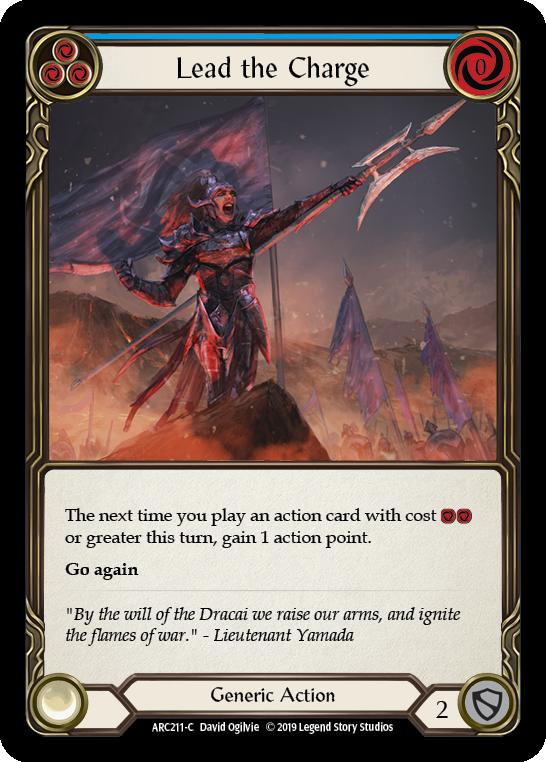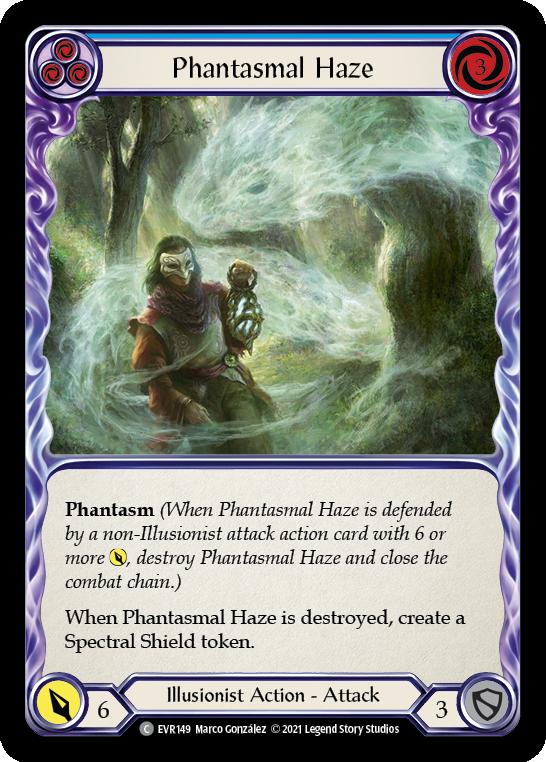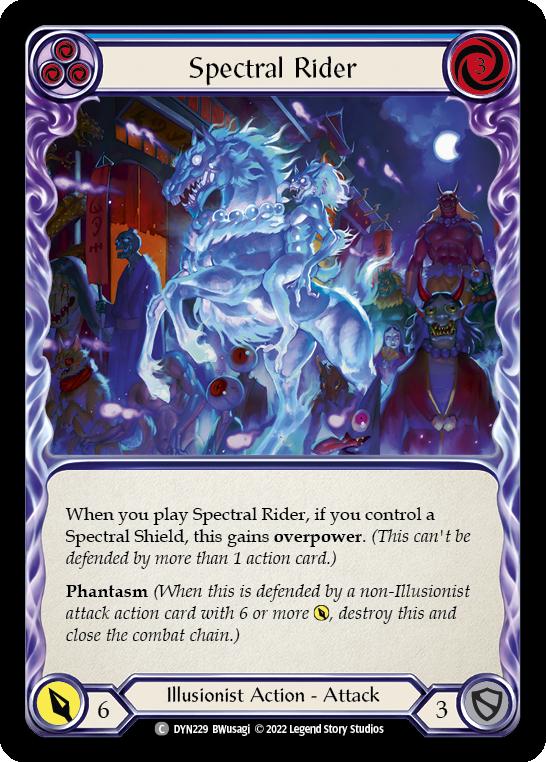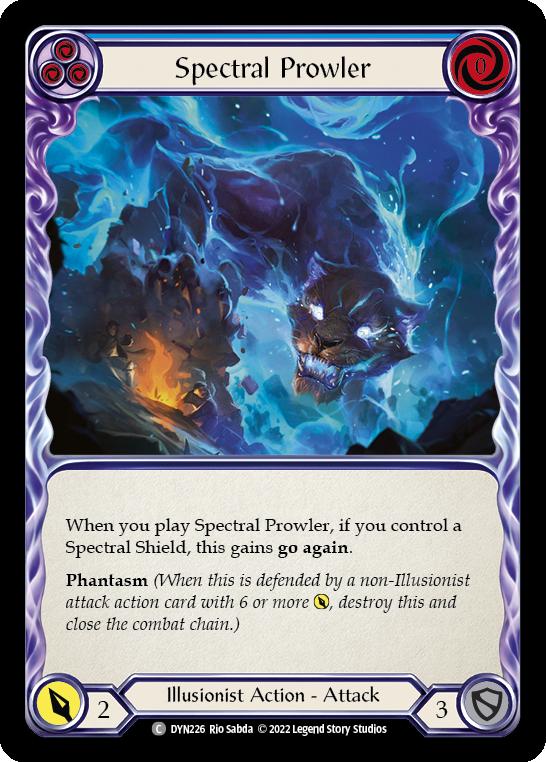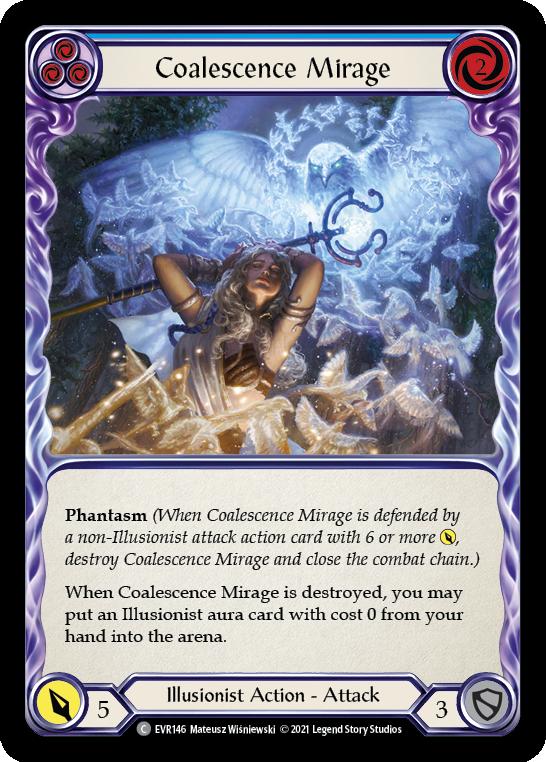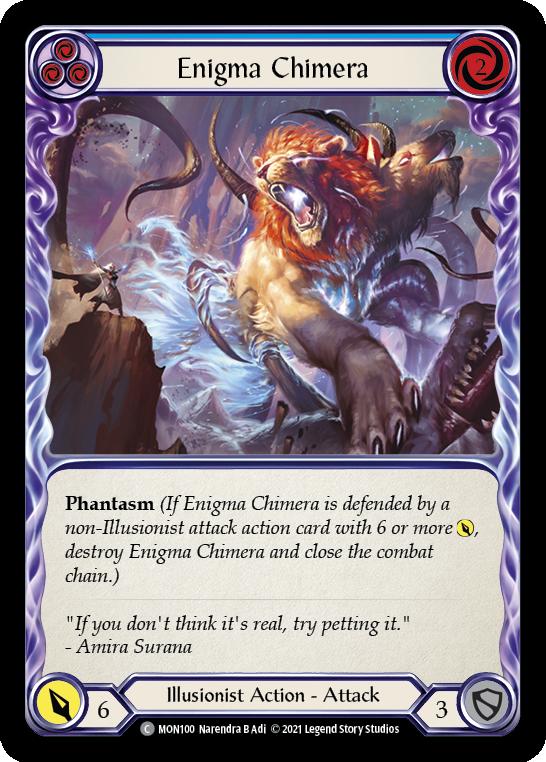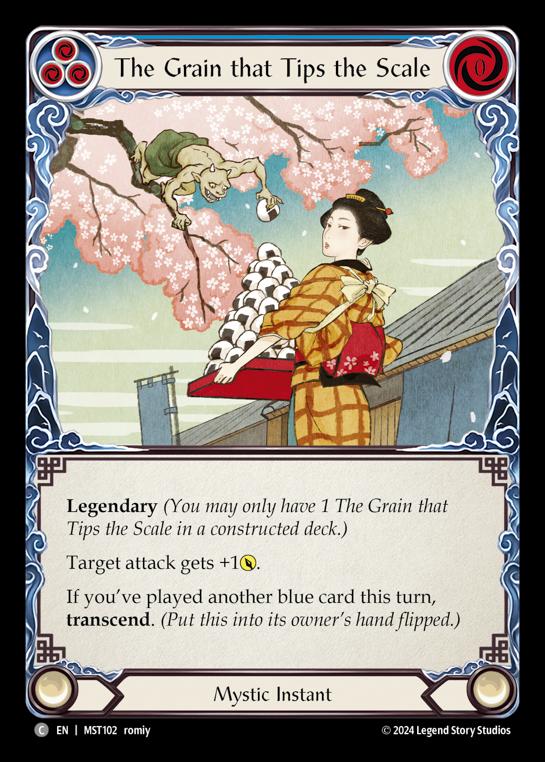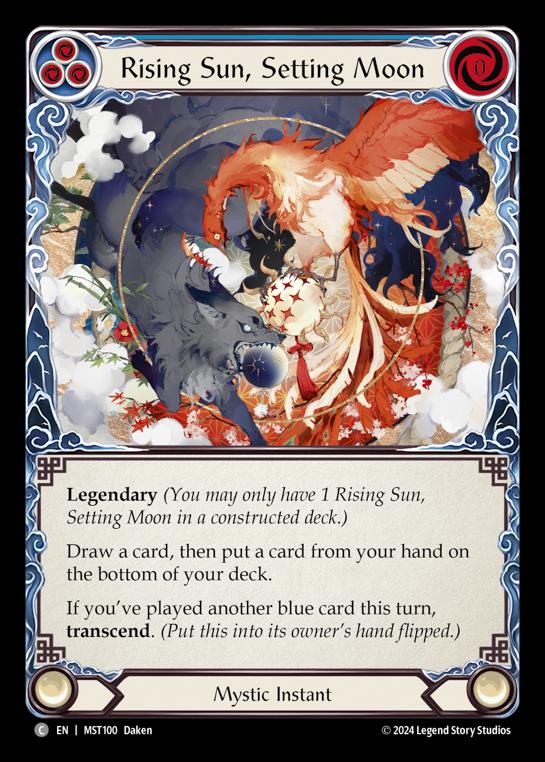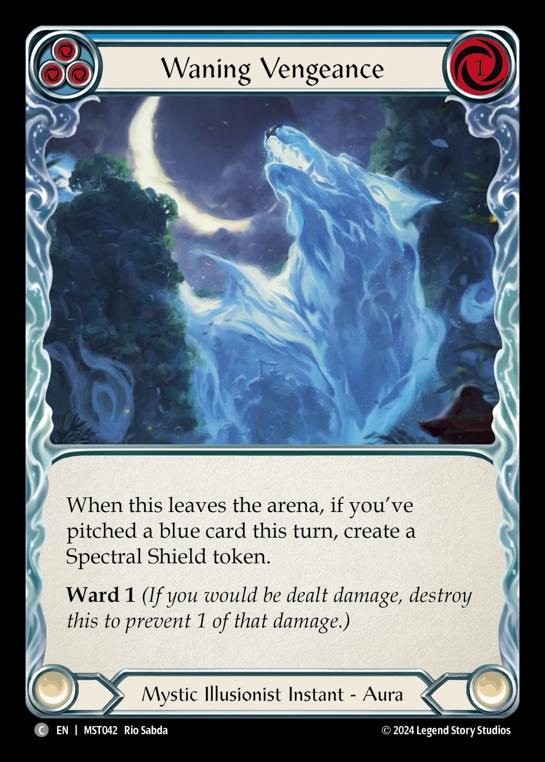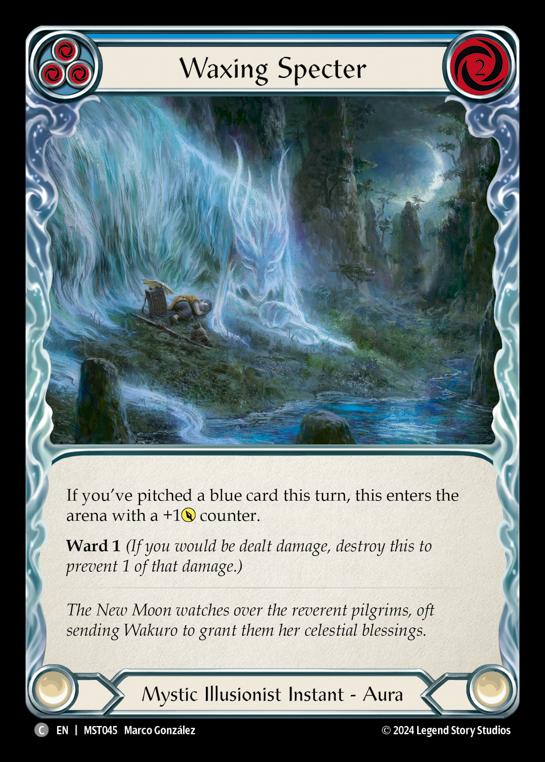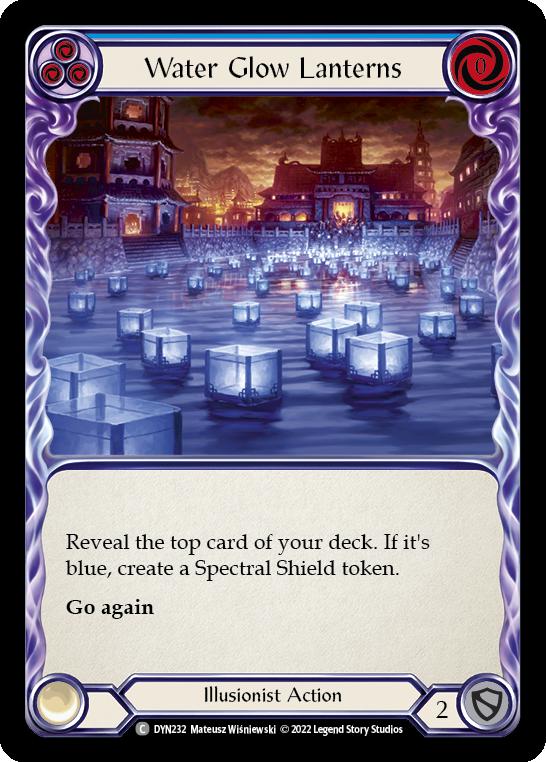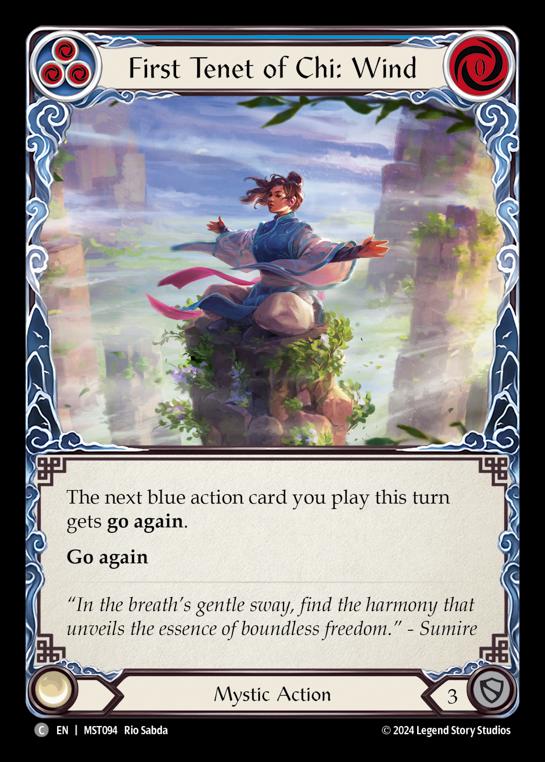Mystic 101 – Part 2: Cracking the Enigma

Hello everyone, and welcome back to Mystic 101! This week, I’ll be going over two ways to build Enigma for Commoner, and talk over how I’d start with constructing a blue lineup for each of these respective variants. It’s only fitting that a hero like Enigma, who is seemingly making waves in other formats as the Calling: Minneapolis playing out at the time of writing, proves to be such a challenge in Commoner, and it’s a challenge I’ve really enjoyed tackling.
Enigma’s Core Problems in Commoner
So Enigma’s problem, as far as I can currently identify, are twofold. Firstly, she really wants ways to generate more than one Spectral Shield at a time, which is just not very effective in Commoner, especially given the already pinched card pool she has access to (not being Light or Draconic is EXTREMELY limiting), and that her ability when transcended is not that great of incentive to accelerate into. The way I see it, she has two possible build paths as it stands: one that focuses on using Cosmo, Scroll of Ancestral Tapestry and playing a healthy mix of reds, and one which leans closer to being all blues utilizing Iris of Reality.
Cosmo Enigma
Cosmo itself is a fine weapon, and pays off for transcending by turning all your +1 counter cards into go again threats. The problem however, is also in that Cosmo locks you into wanting to transcend, so that you can get go again on your auras. Otherwise, you’re realistically just spending a bunch of resources (both in pitch and cards) to trade off ward auras for attacks and then be left with a Spectral Shield that could maybe attack.
Commoner isn’t a format where the instant-speed auras are available in abundance, and in fact, every single legal aura comes from Part the Mistveil, which rewards you for either having pitched a blue the turn you play them or having no other auras in play to gain bonuses (usually in the form of +1 counters). So where does this leave the blue lineup? I think that blue Lead the Charge excels in this deck, and has great synergy with all the phantasm attacks that do things upon being destroyed such as Coalescence Mirage and Phantasmal Haze. Additionally, due to wanting to supplement the Cosmo/Spectral Shield half of the deck with large attacks, I don’t believe in playing any of the cards that care about pitching blues (Waxing Specter and Haze Shelter come to mind). With all these things being said, I’d start a blue lineup for the Cosmo build along the lines of this:
" Cosmo Enigma Blues"
Now I know 16 blues is a lot, but hear me out on this one. The rest of the deck is entirely reds, no yellows, and you do want to transcend some amount of the time that you have to hit critical mass. I’ve opted for the three best Inner Chi cards in Grain, Rising Sun, and Path Well Traveled, but also included A Drop in the Ocean as a way to protect all the auras from popping to a Harmonized Kodachi or something similar. Everything else besides the aforementioned Lead the Charge blocks for three, and has the usual above-rate stats to expect from attacks with phantasm. There may be some questions about why I’m not playing any of the blue auras and the simple answer is that they simply suck. They’re scaled in such a way that the blues usually only ward for one, meaning they’d get destroyed to anything past a light breeze, and while the play pattern of playing an aura into a blue instant to transcend and immediately create a Spectral Shield is undeniably powerful, I just can’t see a world in the current Commoner metagame where both the Shield and the played aura will survive the full turn cycle and leave up enough cards in hand to attack back reasonably. That being said, there is definitely something here, and I think that this blue lineup is a good starting point for where I’d want to be.
Iris Enigma
Now onto Iris Enigma, and this is a build that I’d consider to be less straightforward when compared to using Cosmo, both in its weaknesses and strengths. Whereas Cosmo’s needs can be easily understood within the context of MST as a complete expansion, Iris doesn’t care about the ward values of the auras you’re attacking with, setting everything at a base strength of four, and also has built-in go again on its ability, meaning that there’s less of an emphasis on creating the +1 counters onto the aura to gain any additional benefit.
The trade-off here is that Iris’ pitch requirements inherently want you to play more blues if you’re ever trying to put yourself into a situation where you’re getting two+ attacks off in a turn. What’s great about this though, is that there are some really nice cards to take advantage of, such as blue Water Glow Lanterns, Waning Vengeance, and Waxing Specter as instants to play during your turn and being able to swing in for four. Make no mistake, this is a defensive deck at its core that tries to protect some number of Spectral Shields and auras from destruction so that you can continue attacking and chipping away, almost like a Guardian playstyle with the auras replacing the weapon.
" Iris Enigma Blues"
At first blush, this is a LOT of blues, which may be a bit strange, and even stranger might be the cards I’m not playing. Coalescence Mirage’s rate is less impressive when we’re trying to turn every aura into a four-strength attack, and there are no zero-cost auras I’m wanting to play at instant speed to justify Vengeful Apparition (besides Solitary Companion, but that two-card micro synergy is not something I’m actively trying to gun for). Waning Vengeance is especially nice here as a leading play, pitching a blue to create two auras and swinging for eight is really nice, and one of the reasons I favor Iris as the weapon of choice in this style of Illusionist deck over something like Reality Refractor. In particular is Enigma and Iris’ specific wording allowing for the first Spectral Shield attack to be activated for two pitch, the perfect amount left floating after playing out the Vengeance.
First Tenet of Chi: Wind was the final blue to be added to the deck, and the card that I’m most apprehensive about, simply due to how little need there is to enable go again on a blue action given the current lineup, and playing especially poorly with phantasm (the go again does not occur if phantasm is triggered due to the action point being refreshed at the end of the chain link during the Link Step) which is why I opted for Lead the Charge instead to gain the action point outright.
As for the Mystic instants, it’s the same lineup as before, simply utilizing the best available options given the nature of the deck. While it might seem appealing to include more instants due to the increased blue count, transcending is still not that high of a priority but has better usage here in being a slow repeatable source of five-strength attacks. This strange lineup will make more sense as I round out the decks in my next article, but for now, I’m quite happy with how the blues have turned out.
Conclusion and What’s Next
That’s all for today’s article, and I hope there’s a lot here to get the gears turning on Enigma in Commoner. Like her name suggests, trying to crack the deckbuilding code when crafting a list for this hero is a puzzle in its own way, and the open-ended nature of her own ability can take you in a variety of directions. Next time, I’ll be fleshing out both of these decklists, going over the remaining cards for them and showing some equipment setups (Time Skippers might return!). I hope to see you then.
Further Reading:
How to Play Enigma, New Moon in Blitz
